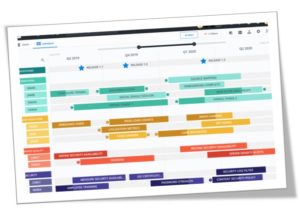The Planning Never Stops – Keep Focused, Keeping Winning
As leaders of digital and technology functions, how many of us have had to suffer the annual budget cycle or the planning cycle in our work places. Yes, they are important. We of course need to understand the money and the commitments for the year. But working in this way doesn’t actually help delivery or successful outcomes – it might help finance (and you) have a budget for the next 12 months, but that’s about it.
If 2020 taught us anything, it was that you can’t plan for everything – and most organisations and many people had to adjust their plans (project and spending) constantly through-out the year. I only hope that this mentality and process is maintained in businesses, not just to help them survive, but to thrive in 2021 and beyond.
How many times is this planning cycle done so close to year end, or often after year end? Things aren’t often agreed until well into the new planning year. So the 12 months ahead, becomes 10 months or less before it’s approved. This just doesn’t make sense for any delivery activities that aren’t bound by yearly cycles – and large projects and programmes never are.
Any good project and programme manager knows that things change (that is the only constant, right?) As much we’d like to know everything that’s going to go wrong and go right – somethings we just don’t know.
Iterative Planning – Keeps You Focused
The business may want you to plan every year – but it’s their requirements – not yours.
 High-level planning should be interactive – ideally that when the annual planning cycle comes along you’re already ready.
High-level planning should be interactive – ideally that when the annual planning cycle comes along you’re already ready.
The other main advantage of reviewing the over all planning for multiple workstreams, project and programmes is that you are in control. This is not difficult, it just requires a little structure, simple processes and commitments. A well organised PMO or project team will already have the level below – the detailed plans, the resources, the spend and budgets – and of course things that have not already started yet, but have budget.
By bringing this all together in a high-level plan, a roadmap, on a regular basis ensures you are focused and also able to take advantage of opportunities around timing, resources, spending and budget.
Understanding the high-level landscape, and most important reviewing it. This keeps you focused and it also enables you to explain this more clearly to stakeholders at all levels.
And that annual budget cycle becomes a heck of a lot easier because you already have the answers!
Maximising Resource – Keep Winning
I talked about opportunities created by good, interactive, high-level planning – and not just waiting to be pushed into it by the business. When activities are book-ended by annual process, when the business operates like this, successes are often limited in number and there is no constant delivery of successful wins and celebration.
In Digital and Technology there are five key areas that need to be considered when you review your high-level planning and develop the iterative roadmap.
- Future Business Needs – What is the business planning for the future? Has something more or less important come up? Are you still focussing on the right things?
- Current Budget and People (resource) constraints – Do you have enough resource to deliver what is planned? Do you need to divert between current and future activities?
- Return on Investment – Do these still make sense? Are you reducing cost or increasing revenue/profit?
- Technical Debt/Reducing Legacy/User Experience – Are the activities designed and timed to reduce complexity? Will this create a better user experience?
- Innovation – Why is this innovative? How will this support the businesses future needs in a new way?
By enabling high-level planning to take place in an iterative way, it enables you to take advantage of excess resource by diverting them to deliver extra successes (reduces slack). It also enables you to re-prioritise activities and resource to deliver in areas that might not have be heading for success – and be turned around. You can create wins all the time when you understand the bigger picture.
This type of interactive high-level planning needs to be consistent, and needs to be a regular drum-beat to your activities. It’s not that annual activity.
Keeping It Interactive
High-level planning should not be cumbersome – it should be a discussion with your leads to (re)capture activities that are going on – they are the delivery stakeholders after all, right?
What will really help is when you have the following:
- Existing PMO processes are defined (if you don’t have a PMO, don’t worry – have processes)
- Operations and projects teams, and different project teams are already working well together (if they are not working together, then find a way to build trust and rapport between them)
You’ll already know what programme and projects are taking place, but it’s important to also understand that other changes are taking place (the ones that get done from operational budgets and often fly-under-the-radar and never get recorded – include those too). This delivers a full 360 view – it can also help leverage advantages in technology as it comes online from the operational teams (even more successes and wins).
You’re a digital and technology leader! You need to know what’s going on across your domain all the time. Never stop planning – keep focused, and keep winning.
